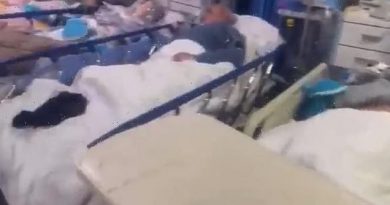Covid 19 coronavirus: NSW cases set to spike; radical Sydney lockdown overhaul tipped
According to NSW Government sources, southwestern Sydney could be placed into a harder lockdown, while restrictions would be relaxed in communities barely affected by Covid-19.
The news comes after NSW Health Minister Brad Hazzard confirmed today’s cases will be higher than yesterday’s record total of 124.
“There will be more [cases],” Hazzard told KIIS1065’s The Kyle and Jackie O Show this morning.
“We need people in southwest Sydney to stop moving around. We need people to understand it’s a dangerous virus.”
Overnight, more exposure sites were added in Sydney’s CBD, the southwest and inner west, while an alert now has been issued for the Byron Bay area, where sewage testing has found virus fragments.
NSW Premier Gladys Berejiklian says given the number of people infectious in the community, she expects the number of cases to rise even higher.
“We anticipate case numbers will continue to go up before they start coming down and we need to brace ourselves for that,” she told reporters on Thursday.
“[The virus] is spreading like we’ve never seen before.”
At least 70 of yesterday’s 124 locally acquired cases had spent some time in the community while infectious, with another 17 cases still under investigation.
In contrast, almost all new cases in Victoria (24 of 26 cases) yesterday had been in isolation for their entire infectious period.
In order for NSW to get its numbers down, experts say there are still some measures that authorities could introduce. Options include:
Limiting travel to 5km, only leaving the house three times per week
Sydneysiders are restricted to a 10km limit for exercise, but there is still nothing to stop someone in Cronulla deciding to visit their favourite Bunnings store in Parramatta.
Burnet Institute epidemiologist Professor Michael Toole said limiting travel, whether that be for 5km or 10km, would help reduce movement in Greater Sydney.
Toole said Victoria’s 5km limit was one of a range of measures put in place that worked to bring down cases.
Evening curfew
During the height of Melbourne’s stage 4 lockdown restrictions, residents were not allowed to leave their homes after 8pm unless it was for essential work, medical care or caregiving.
University of NSW Professor Mary-Louise McLaws, who is an adviser to the World Health Organisation, said a curfew in hot spot areas of Sydney could be useful.
“A curfew reminds people that we’re in dire straits and we can’t go out and you are less likely to have people not abiding by the rules, and that’s why Victoria brought in curfews,” she said.
But Toole said curfews probably were more about symbolism than infection control, and believed a 5km travel limit should be considered before a curfew was.
Masks outdoors
The images of Sydneysiders flocking to places like Bondi Beach and Manly for their daily exercise have disturbed Toole, who said Delta cases in Melbourne had shown outdoor transmission was occurring.
He said cases had been discovered among people who attended outdoor sporting events, including an AFL game at the Melbourne Cricket Group (MCG) and a rugby game at AAMI Park stadium. Those infected had not been close to positive cases at these venues but had still managed to get infected.
“We know that outdoor transmission occurs,” Toole said.
NSW chief health officer Dr Kerry Chant has said that people should wear masks outdoors when they can’t socially distance and Toole said this should apply to the crowds at Bondi and Manly, as many groups appeared not to be socially distant.
Fast Covid testing at workplaces and at home
Deakin University epidemiologist Professor Catherine Bennett believes authorities should be honing in on where transmission was occurring outside of households – and that was likely going to be at workplaces.
“Workplaces might not be able to close down so they should look at how they can operate more safely or whether antigen testing can be used to pick up infections on the day,” she said.
McLaws agrees, and said some rapid Covid tests had an accuracy of 99.96 per cent when testing people in the first five to seven days of their infection, before they got symptoms.
“They stop being accurate when people become symptomatic,” she said.
She said the UK had used these tests and made them available at pharmacies, libraries and other spaces.
The tests could also be made available to households so people could get quick results rather than being forced to line up for PCR (polymerase chain reaction) testing and then waiting more than a day for the results.
Source: Read Full Article

